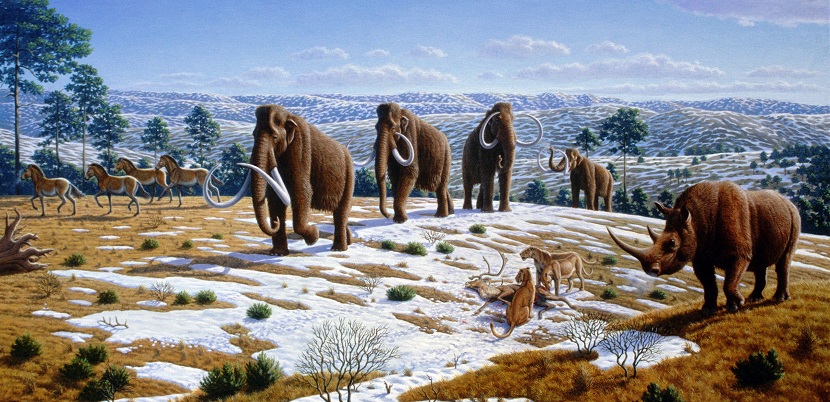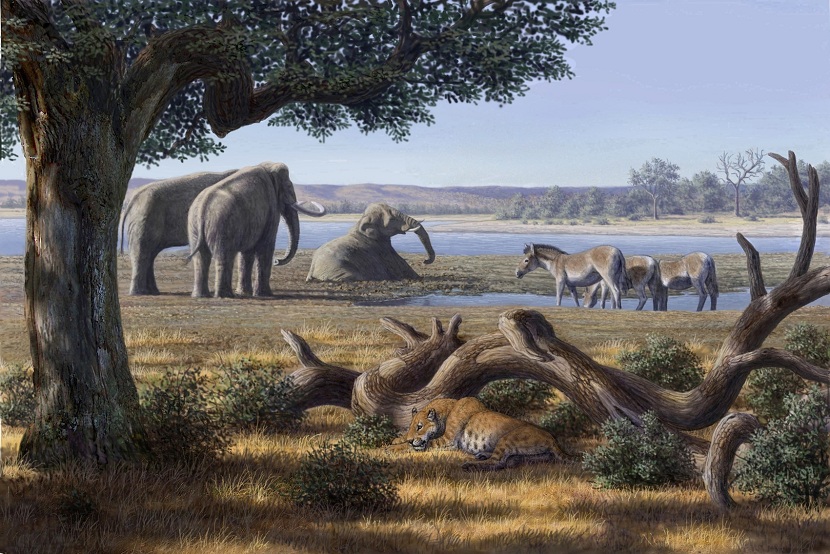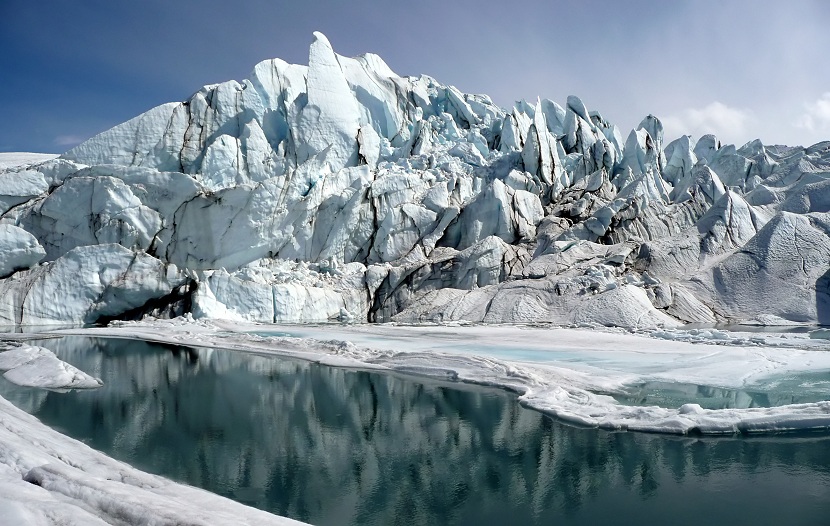
El quaternary period they have several geological divisions. Today we are going to focus on the first division of this period. Its about Pleistocene. This geological division was characterized mainly by having low temperatures throughout the planet and the appearance of large mammals such as the mammoth. To fully understand everything that the temporal study of this geological division entails, it is necessary to know correctly what the geological time.
In this article we are going to tell you everything you need to know about the Pleistocene.
Key features

This time is a reference since the evolution of the human species is studied. During the Pleistocene It was when the first ancestors of modern man appeared. It is one of the most studied geological divisions and the one with the most fossil records. This guarantees that the information obtained is quite comprehensive and reliable.
The Pleistocene began about 2.6 million years and end at the end of the last ice age occurred in 10.000 BC During this time there have hardly been any great movements of the continents. It has practically remained in the same position.
As we mentioned at the beginning of the article, this entire geological division has been characterized mainly by having low temperatures globally. This has led to the succession of glacial cycles in which temperatures have been increasing and decreasing. This is known as the interglacial periods. Approximately 30% of the entire planet's surface was perennially covered with ice during this time. The areas that kept to a continuously frost were the poles.
As for the fauna, the great mammals such as the mammoth, the mastodons and the megatherium lived their maximum splendor. These animals practically dominated the planet for being large. There was also a development of the ancestors of modern man who were the Homo erectus, Homo habilis, and Homo neanderthalensis.
Pleistocene geology

During this division there was not much geological activity. The continental drift It seems that it will be slowed down compared to previous times. Just the tectonic plates on which the continents sit has not refused to move more than about 100 kilometers from each other. Practically at this time the continents were already in a position very similar to the one we have today.
The glaciations were very abundant during this period, the ember insisted on several cycles of notable increase of decrease in the temperature of the planet. This caused that several regions further south will become completely covered with ice. As a consequence of the glaciations, the surface of the continents was affected by an erosive process. This is what is known as glacier modeling.
As well sea level decreased significantly by approximately 100 meters. This is due to the formation of ice during the glaciations.
Pleistocene climate

During this geological stage, what is known as the ice Age. This is erroneous since during the Pleistocene a series of glaciations occurred in which there were periods with temperatures that were environmentally higher and others lower. The weather in ambient temperatures were fluctuating throughout the season although temperatures they did not rise as much as in other periods of Earth's geology.
The climatic conditions are practically a continuation of the earlier Pliocene epoch. At this stage, the planet's temperatures dropped significantly. Stripes of land closer to the poles were observed, and during this stage Antarctica remained almost entirely covered in ice from the northern extremes of the American and European continents during the glaciation stages.
Throughout the entire Pleistocene stage there were 4 glaciations.
Flora, fauna and human beings

During this stage, life was quite diverse despite all the climatic limitations that existed because of the glaciations. During the Pleistocene there were several types of biomes. In each type of biome, the plants that could best adapt to the most extreme environments were developed. In the northern hemisphere of the planet within the Arctic Circle is where the biome that we know today as tundra developed. The main characteristics of the tundra is that the plants are small, there are no leafy trees or large ones. In this type of ecosystems, lichens are abundant.
The taiga is also another biome that was observed during the Pleistocene. The taiga consists mainly of a vegetal form where they predominate coniferous trees and sometimes reach great heights. As information has been extracted from the fossil records, there was also the presence of lichens, mosses and some ferns in these biomes.
Within the continents the temperature was not so low and it allowed large plants to develop that could form large forests. It is here that thermophilic plants began to emerge. These plants are those that have adaptations that have been necessary to survive extreme levels of temperature.
In terms of fauna, mammals were the most dominant group. One of the highlights of this fauna is that it is known as megafauna. That is, the predominant fauna was large and fully capable of withstanding the low temperatures that existed at that time.
In addition, other groups of animals continued to increase their diversity and evolution to adapt to new environments. These animals are birds, amphibians, and reptiles. The mammoth was the most interesting mammal of this time. The appearance or they were quite similar to the elephants that we know today. They had long sharp fangs and their main characteristic was the curvature that oriented them upwards. Depending on the area where they will be found and their temperature it was covered with more or less fur and they had a herbivorous food habit.
As for humans, most of the ancestor species of the Homo sapiens but this one also made its appearance. Its main characteristic was that it reached the maximum development of its brain.
I hope that with this information you can learn more about the Pleistocene.